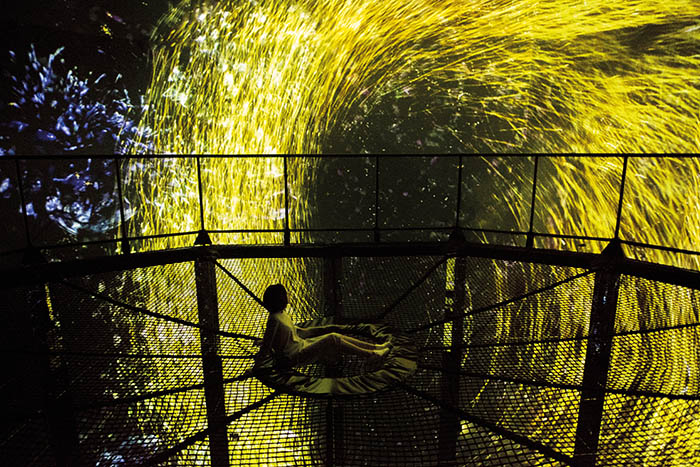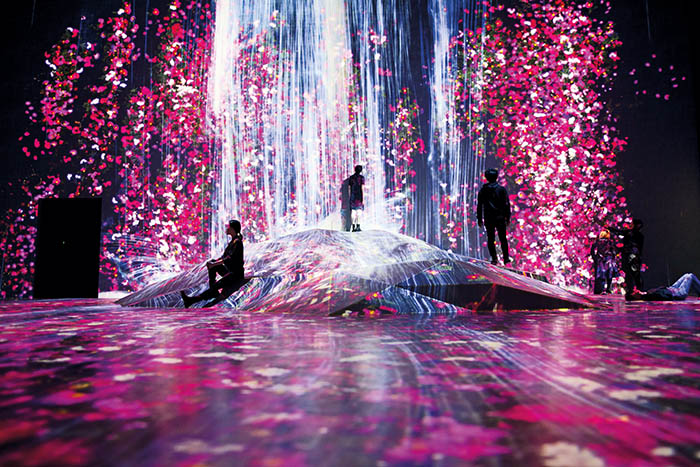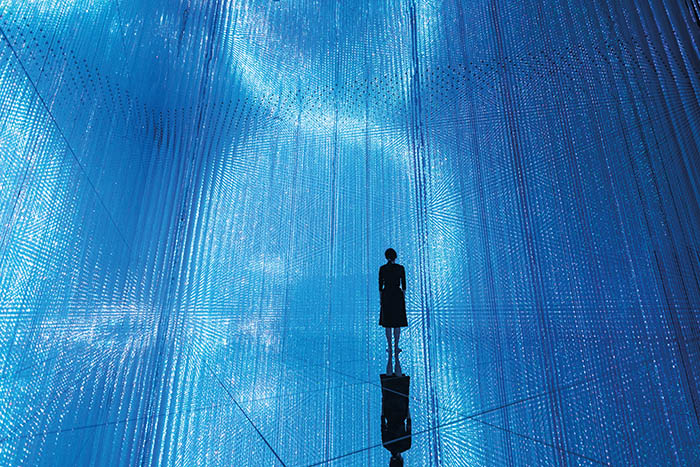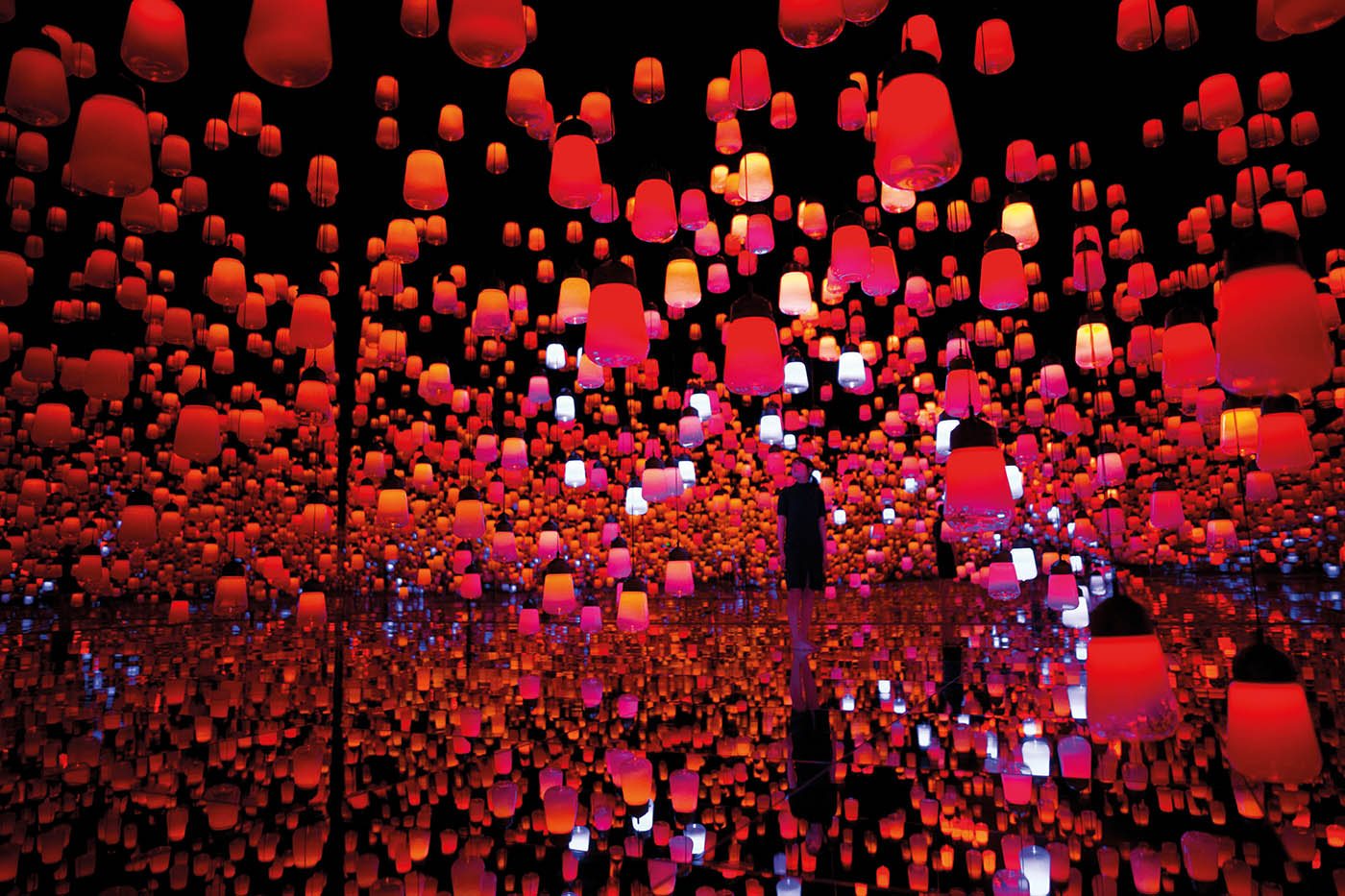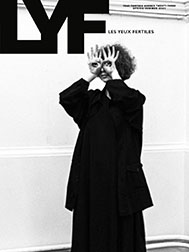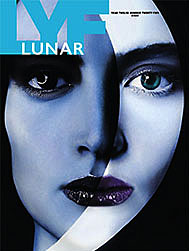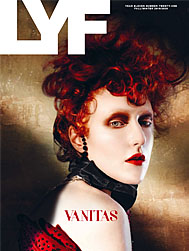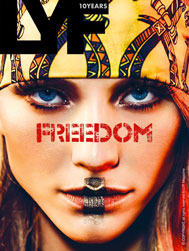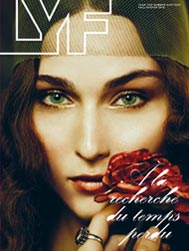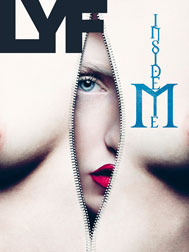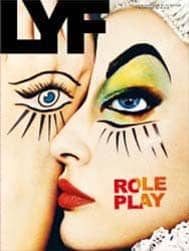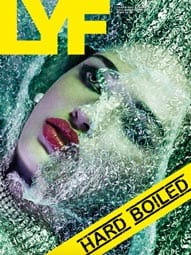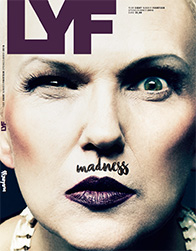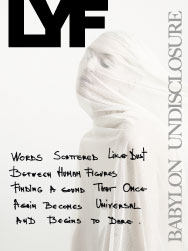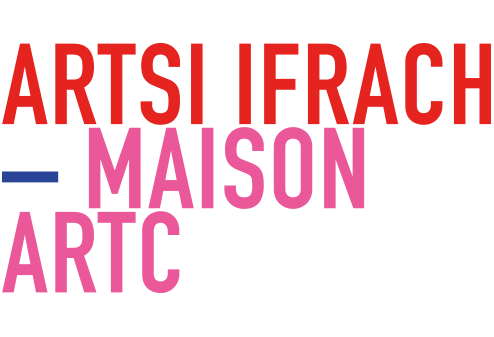
Photos @Artsimous, a collaboration between Moroccan photographer Mous Lamrabat and Artsi Ifrah. Portraits: Suzana Holtgrave
Jerusalem born Artsi Ifrach is a fashion designer who is better known as Maison ARTC in fashion world. Artsi has found his sanctuary in Morocco on his quest for independence and has been actively creating his ‘one of a kind’ collections since. Artsi – meaning ‘My Country’ in Hebrew and Arabic – lived in Tel Aviv, Paris and Amsterdam before settling in Morocco and has an extensive understanding of multiculturalism. Using colours and prints as his landscape, Artsi’s imaginative designs reflect on space and time. From his childhood memories to the memoirs of nomad.
He started fashion designing at the age of 28 while he was living in Amsterdam. After he returned to Israel and along the way he was chosen to be one of the most influential designers on the last 100 years of Tel Aviv. From there he moved to Paris presented by 2m Bureau showing in the Haute Couture week during 5 years in form of installation. Today he lives and works in Morocco in Marrakech, his parents hometown, where he also collaborates with local photographers such as Laila Hida and Mous Lamrabat. With Mous he has created an artistic duo called @artsimous, a collaboration of photography that tells the story of cultural crossover, the inspiration coming from a source of culture, history and art.
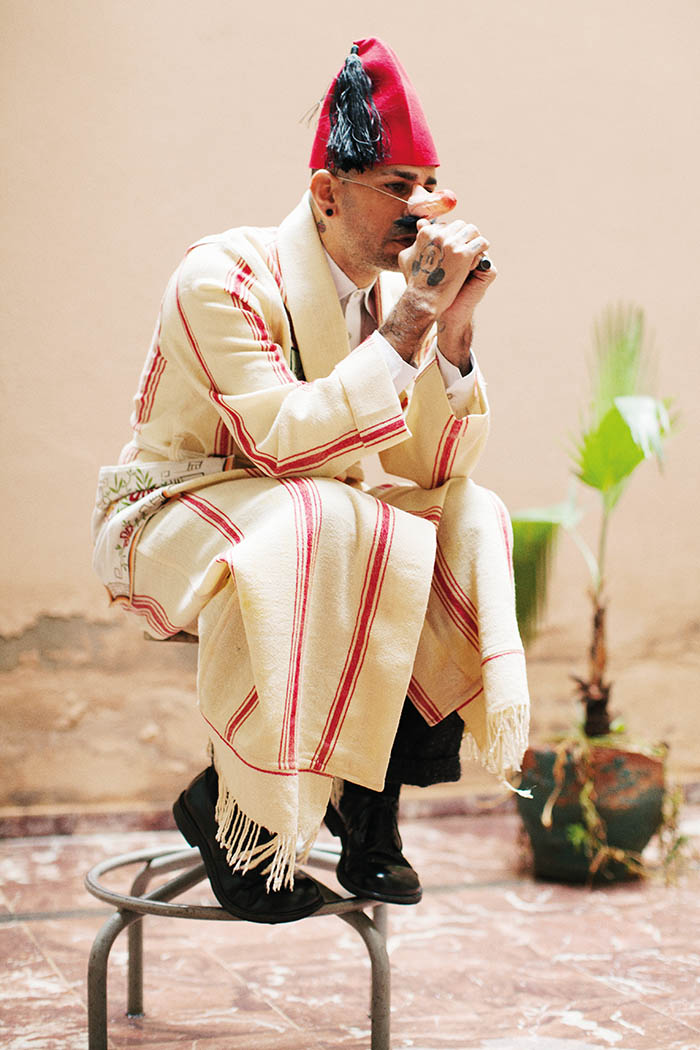
The state of mind is to keep the picture as something timeless that states long after the collection is done. “I believe that fashion is a part of art that tells something about our thought, a period that meets culture and individuality”. “I am totally autodidact, I am not working with designing skills, I am working just with creativity and intuition.”
His design goes to the roots, to the memories. His influence comes from history, culture and traditions. He is searching on the past to carry on the future. He is known for his richness, colourful and eclectic style. “I am trying through material that surrounds me to create a story that captures culture, memories, artisan work. The sources of the material that I am using are vintage and handmade.”
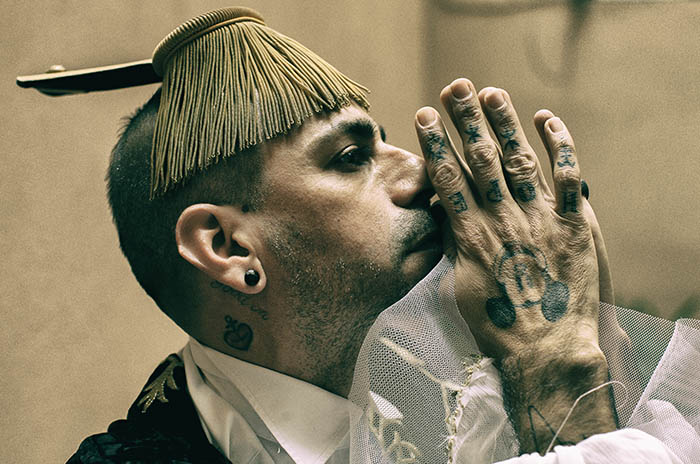
“I create my pieces with a total freedom, from the state of mind I have at that moment. The point is to be respectful of the past, of the culture and bring something warmer. In my pieces I want to create a memory that moves me emotionally. Vintage fabrics can match past and present together. Colours, patterns and prints are my landscape”.
Napoleon said once “there is a thin line between the ridiculous and the sublime”, I am searching this line every time in every piece. I am always thinking what we would like to have, that we do not have yet as a result, I believe that the strongest part we all have is our individuality. That is what I am trying to do with ‘one-of-a-kind’ pieces as we all are ‘one-of-a-kind’.
I imagine a look to create an attitude. It belongs to every woman to find out her own path of self confidence. I don’t stop dreaming, I live it every day, I don’t think I could do it if I stop dreaming. Walt Disney said “all our dreams can come true if we have the courage to pursue them.”
The good news is I have the courage.
My name is Artsi.
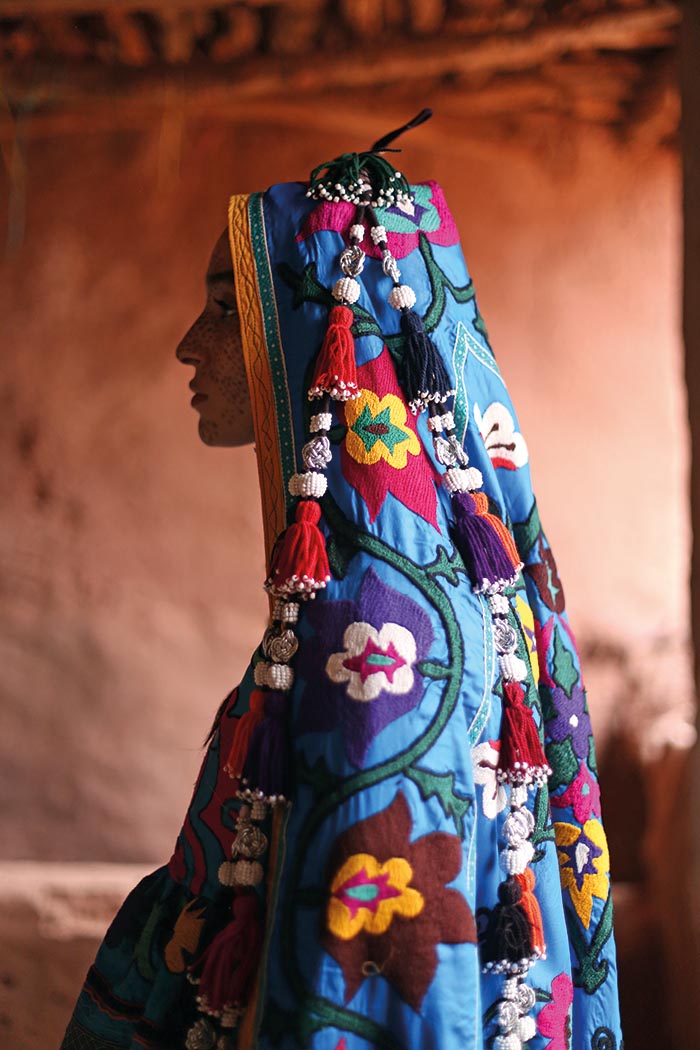
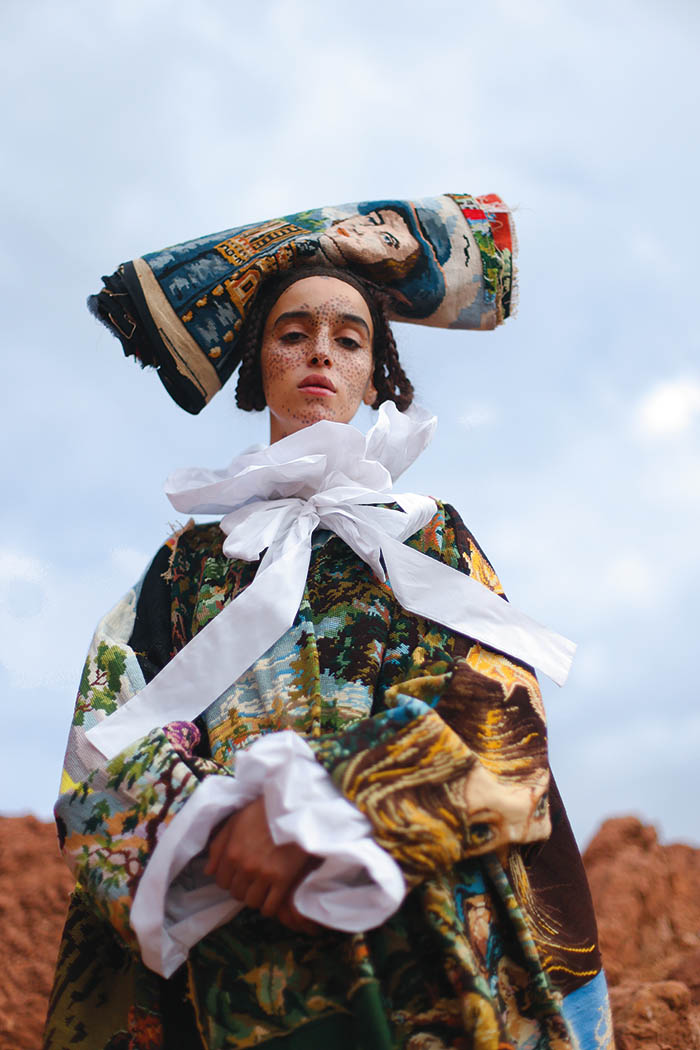
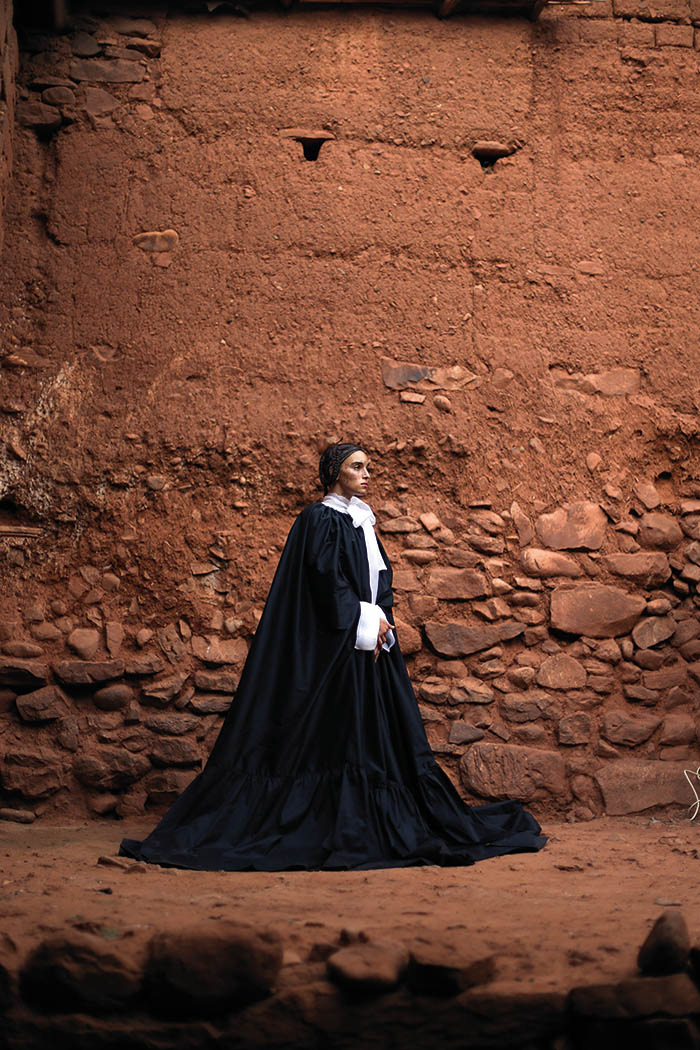
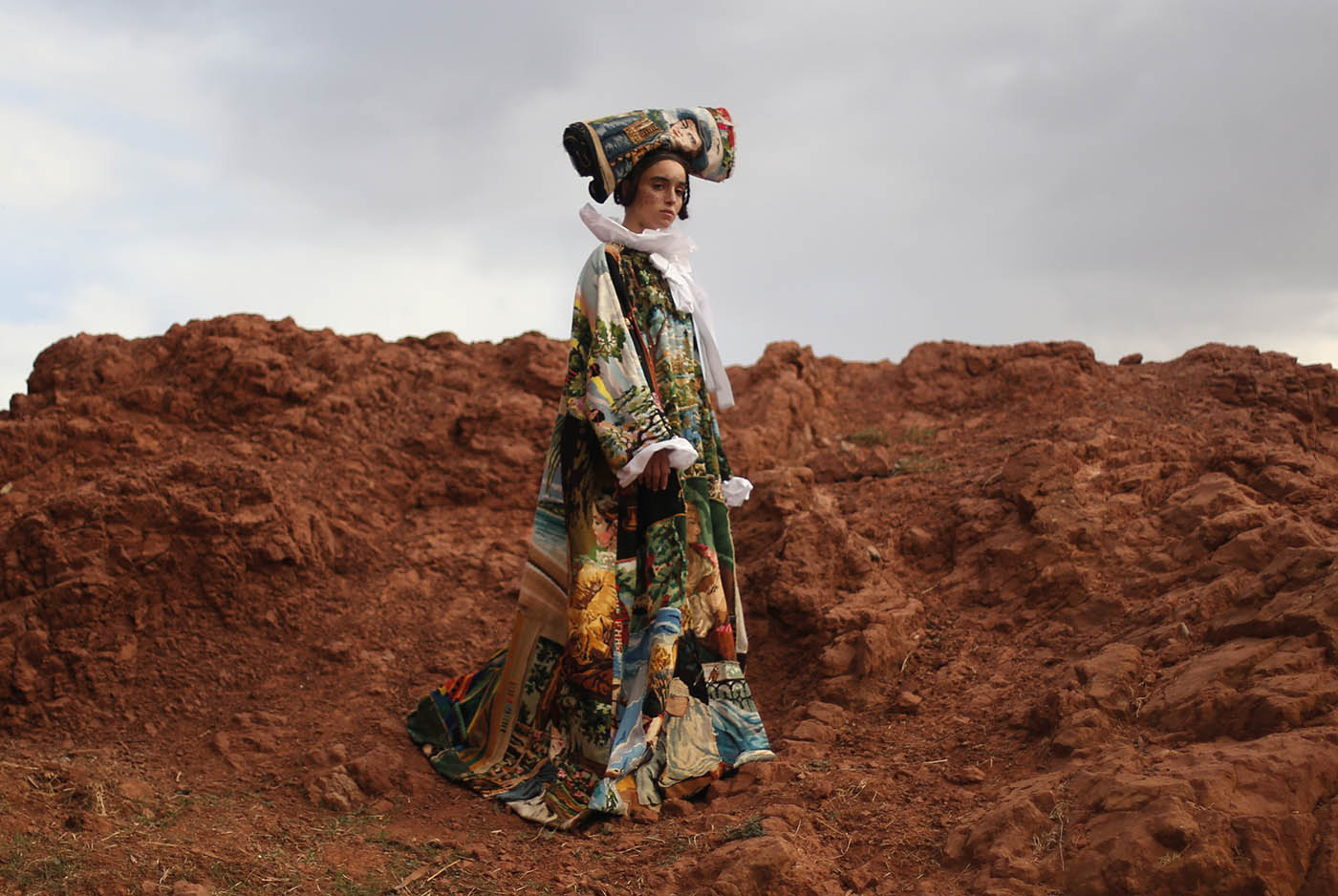
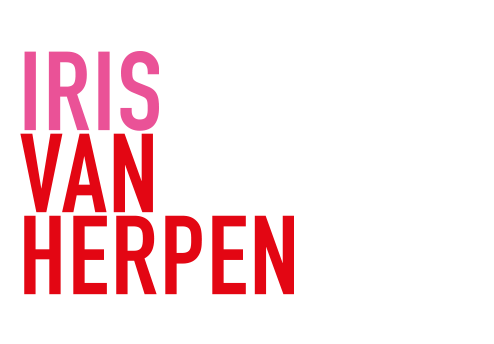
Iris van Herpen is a Dutch fashion designer who is widely recognized as one of fashion’s most talented and forward-thinking creators who continuously pushes the boundaries of fashion design. Since her first show in 2007 van Herpen has been preoccupied with inventing new forms and methods of sartorial expression by combining the most traditional and the most radical materials and garment construction methods into her unique aesthetic vision.
Van Herpen is often hailed as a pioneer in utilizing 3D printing as a garment construction technique, and as an innovator who is comfortable with using technology as one of the guiding principles in her work because of its sculptural nature and unfamiliar form. The designer’s intent is to blend the past and the future into a distinct version of the present by fusing technology and traditional Couture craftsmanship.
Her singular vision combined with the complexity of her creations has made van Herpen a fixture on the Paris Haute Couture calendar, where she has shown since January 2011.
Van Herpen’s distinct aesthetic viewpoint made her dress many progressive musicians and actresses such as Björk, for whose videos and tours van Herpen has created several dresses, Cate Blanchett, Tilda Swinton, Cara Delvingne, Daphne Guinness, Miley Cyrus, Gwendoline Christie, Fan Bing Bing, Lady Gaga, Naomi Campbell, etc.
Van Herpen’s work has been featured in various museum exhibitions, including a major retrospective that is touring the United States since 2015, beginning with a six-month long run at the High Museum of Art in Atlanta.
“My creative process is based on experiment and innovation, exploring new forms of craftsmanship that can transform traditional Couture to new grounds of innovation through a multi-disciplinary approach of collaborations with artists, architects and scientists. Through my eyes, fashion creates a dialogue between our insides and our outsides. Both art and fashion are linked to our deepest desires, moods, and our most personal expressions. Each collection is a search to reach beyond my understanding of my canvas of female form and todays definition of a garment, to explore new forms of femininity for a more diverse and conscious fashion for the future”, says Iris van Herpen.
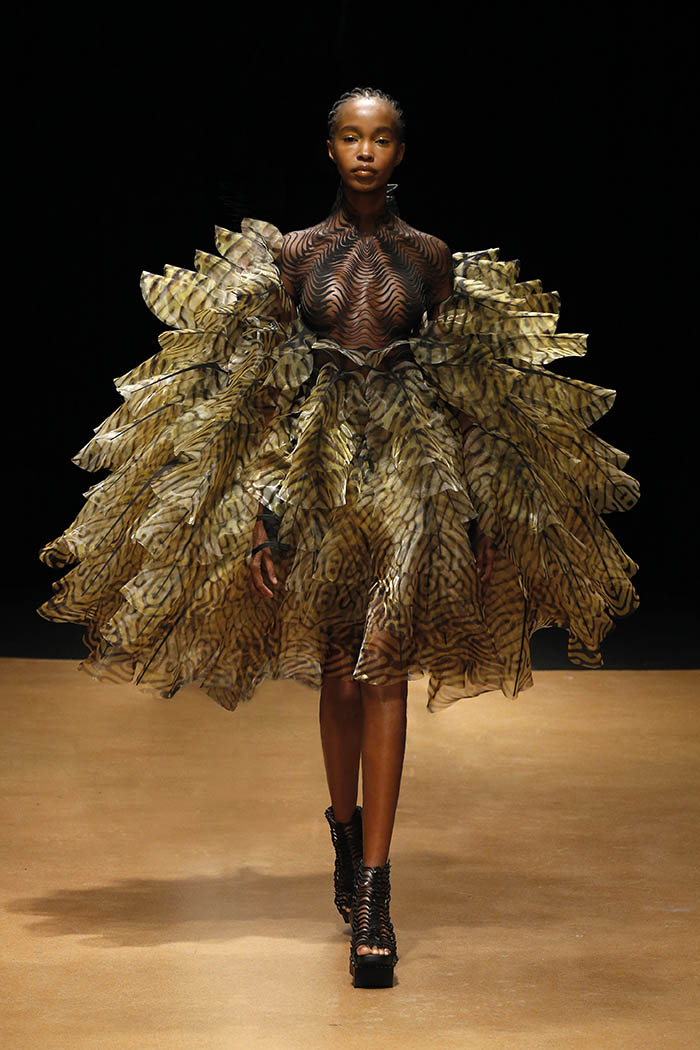
‘SENSORY SEAS’
For ‘Sensory Seas’ collection, Iris van Herpen draws inspiration from the sensory processes that occur between the intricate composition of the human body, mirrored with the fibrous marine ecology of our oceans. The first threads of inspiration came from the Spanish neuroanatomist Ramón y Cajal. He wanted to uncover something that no one had yet understood. He questioned: how does the brain engage in conversation with its counterparts? Exploring our central nervous system in microscopic detailing, Cajal documented his revolutionary findings through anatomical drawings that are considered amongst the world’s greatest scientific illustrations. Hunched over his microscope, he merged science with art and brought to life the threads of our enchanted biology to the human eye.
Other inspiration stemmed from diving into the deep depths of the Hydrozoa, a class of delicately branched sea-life organisms. Shifting between a polypoid stage and a medusa stage, the Hydrozoa embroider the oceans like aqueous fabrics, forming layers of living lace.
‘Sensory seas’ holds a microscope over the indelible nuances between the anthropology of a marine organism, to the role of dendrites and synapses delivering infinite signals throughout our bodies
The collection consists of 21 silhouettes that illustrate a portrait of liquid labyrinths, where dresses spill onto the floor in elegant train and pigments gather in clouded pools of blues and lilac, leaking into one another like marble. Colourful meshworks of cellular geometry are translucently layered to create deep-sea aquarelles. Soft shades of greens, blues and gentle ochres are painted by Shelee Carruthers and juxtaposed with the warming reds of coral reefs.
Matching the ebb and flow of arresting sensations from neuron to ocean, changeant-silks ripple buoyantly. Swaying serenely, they are at the liberty of change, regenerating amongst the immensity of the ocean, to the silent, yet eternal chattering of our senses.
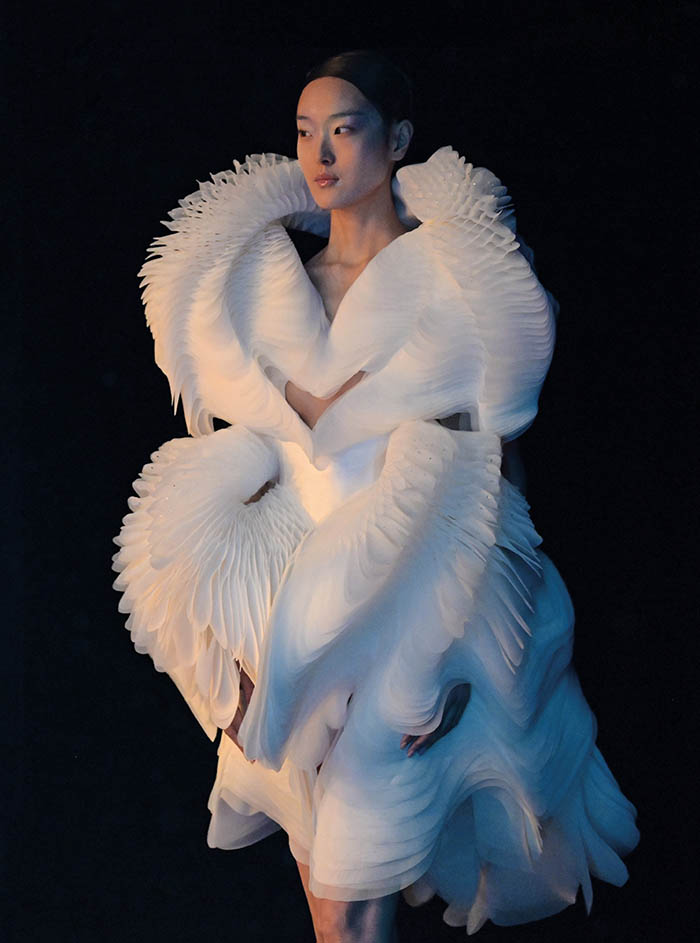
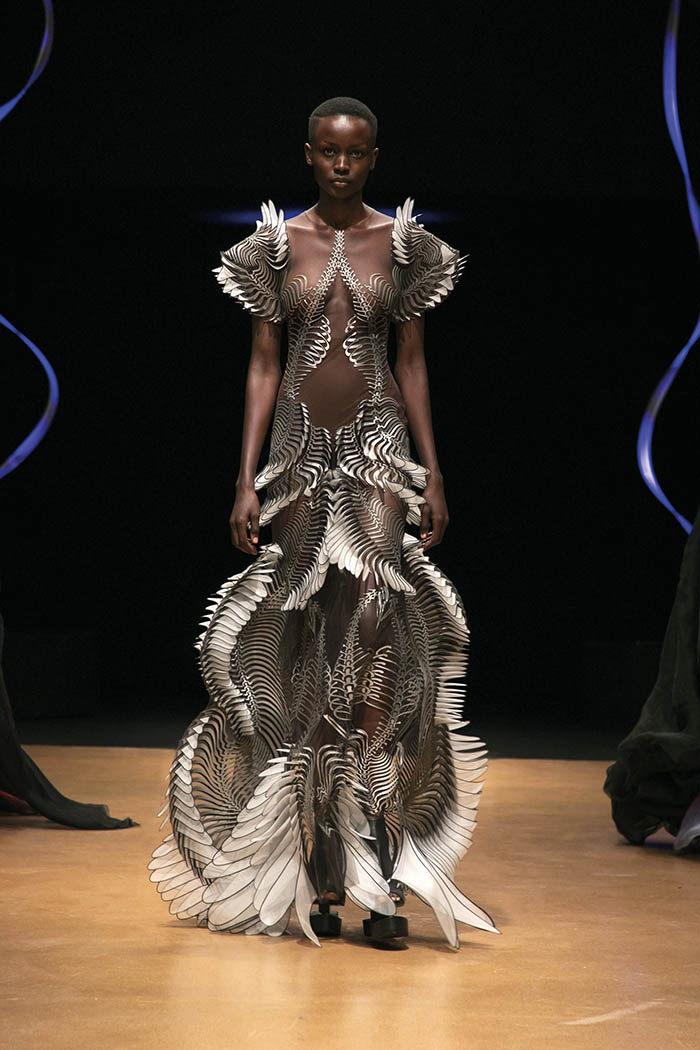
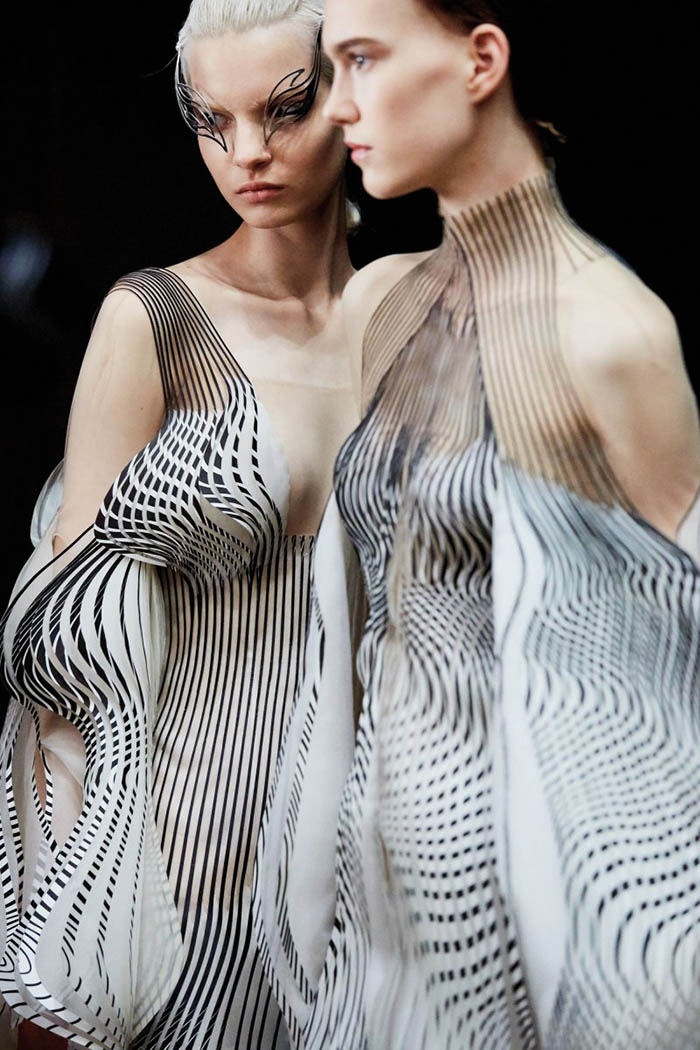

Exhibition views of MORI Building DIGITAL ART MUSEUM
teamLab Borderless, 2018, Odaiba, Tokyo
teamLab, founded in 2001 by Toshiyuki Inoko, is an art collective, interdisciplinary group of
ultratechnologists whose collaborative practice seeks to navigate the confluence of art, science, technology, design and the natural world. Various specialists such as artists, programmers, engineers, CG animators, mathematicians and architects form teamLab.
Their aim is to explore a new relationship between humans and nature, and between oneself and the world through art. Digital technology has allowed art to liberate itself from the physical and transcend boundaries. teamLab sees no boundary between humans and nature, and between oneself and the world; one is in the other and the other in one. Everything exists in a long, fragile yet miraculous, borderless continuity of life.
This special art collective believes digital technology can expand art and that art made in this way can create new relationships between people.
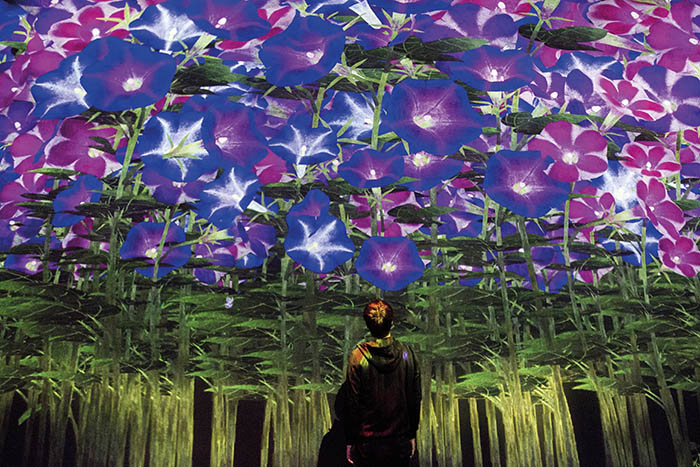
The characteristics of digital technology allow artworks to express the capacity for change much more freely. Viewers, in interaction with their environment, can instigate perpetual change in an artwork. Through an interactive relationship between the viewers and the artwork, viewers become an intrinsic part of that artwork.
As time went on, while teamLab gained passionate followers among young people, they were still ignored by the art world. Its debut finally came in 2011 at the Kaikai Kiki Gallery in Taipei, as the collective was invited by the artist Takashi Murakami. Since then, they have gained opportunities to join major contemporary art exhibitions in cosmopolitan cities such as Singapore Biennale 2013. Also in 2014, New York PACE Gallery started to help promoting teamLab artworks. These fortunate factors allowed them to expand rapidly. Finally in 2015, the collective was able to organize its own exhibition for the first time in Tokyo. These situations further accelerated their evolution and gave them opportunities to exhibit internationally; New York, London, Paris, Singapore, Silicon Valley, Beijing, Taipei, and Melbourne among others.
teamLab believes everything, including beauty, exists in a long, fragile yet miraculous continuity of life. The collective aims to create an experience through which visitors can recognize this continuity itself as beautiful.
